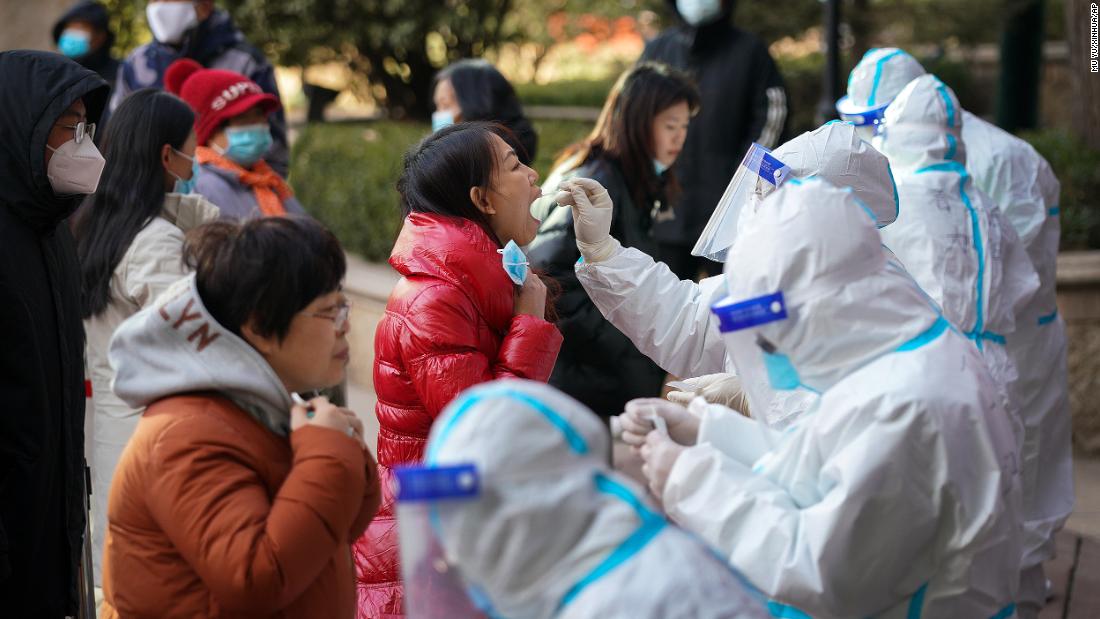
As of Jan. 2, a total of 304 positive cases have been reported in Hebei, most of them in Shijiazhuang, official figures show. The city is only 289.6 kilometers southwest of Beijing – about three hours away, or an hour by high-speed train.
At a press conference on Thursday, city officials announced a ban on outbound travel for all Shijiazhuang residents and vehicles, except in an emergency.
Within the city, meetings are prohibited, all schools have been suspended and residential communities and villages are also closed.
The restrictions are some of the strictest being imposed in China as the country largely contained the spread of the coronavirus in March. They are reminiscent of the draconian lockdown during the first outbreak in the central city of Wuhan, where the coronavirus was first discovered in December 2019.
The outbreak in Shijiazhuang comes just weeks before the Lunar New Year Holiday, the most important annual festival in China where millions of people typically travel home to reunite with their families.
Last year, the Chinese government shut down Wuhan two days before the Lunar New Year, but millions of people had already left the city, possibly carrying the virus with them to their hometowns across the country.
This year, fearing that Lunar New Year travels could once again accelerate the spread of the virus, a growing number of local governments have discouraged residents from traveling home for the holidays, instructing state-owned officials and employees to to remain unless special approval is given.
Strict measures
In Shejiazhuang, authorities declared last week that the city was entering a “war mode” to combat the spread of the virus. A city-wide coronavirus test drive was soon rolled out to all 11 million residents.
On Thursday evening, two medical teams – each with about 100 members – with test kits and other equipment were dispatched from the eastern provinces of Jiangsu and Zhejiang to Shijiazhuang to support the effort.
In addition, a hospital in the city has been cleared and designated to treat Covid-19 patients, with three more hospitals ready, Meng said.
Rapid and drastic measures such as mass testing, extensive contact tracking, and strict lockdowns have shaped China’s response to sporadic local outbreaks.
Last October, the eastern port city of Qingdao tested more than 10 million people in just four days, more than a dozen locally transmitted cases.
In late October, Kashgar Prefecture in Xinjiang’s westernmost region conducted mass tests on nearly 5 million people and imposed lockdown measures after a single asymptomatic coronavirus case was reported.
Potentially weak link
But this time around, some public health experts in China said the re-emergence of the virus in Shijiazhuang was discovered too late, as rural areas are a weak link in the prevention and control of epidemics.
The first confirmed case was discovered on Jan. 2 – a 61-year-old female villager on the outskirts of Shijiazhuang. In the following days, most of the new cases were discovered in villages in the same district.
Lu Hongzhou, co-director of the Shanghai Public Health Clinical Center at Fudan University, told the state-run Global Times that the outbreak in Shijiazhuang shows that villages are a vulnerable link.
As the virus spread silently, villagers continued to participate in rallies. Local health authorities have found that many infections were linked to funerals, weddings and other social gatherings, the report said.
“Aside from wedding banquets, some villagers also held religious activities at home every Wednesday, Friday and Sunday, or at least twice a week, in which dozens of people took part, mostly elderly,” said a local official from the epicenter of the Shijiazhuang eruption. quoted as saying.
CNN’s Beijing agency attributed to reporting.